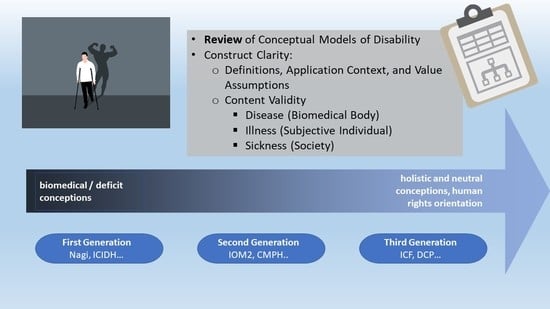Conceptual Models of Disability: The Development of the Consideration of Non-Biomedical Aspects
Abstract
Share and Cite
Forstner, M. Conceptual Models of Disability: The Development of the Consideration of Non-Biomedical Aspects. Disabilities 2022, 2, 540-563. https://doi.org/10.3390/disabilities2030039
Forstner M. Conceptual Models of Disability: The Development of the Consideration of Non-Biomedical Aspects. Disabilities. 2022; 2(3):540-563. https://doi.org/10.3390/disabilities2030039
Chicago/Turabian StyleForstner, Matthias. 2022. "Conceptual Models of Disability: The Development of the Consideration of Non-Biomedical Aspects" Disabilities 2, no. 3: 540-563. https://doi.org/10.3390/disabilities2030039
APA StyleForstner, M. (2022). Conceptual Models of Disability: The Development of the Consideration of Non-Biomedical Aspects. Disabilities, 2(3), 540-563. https://doi.org/10.3390/disabilities2030039





